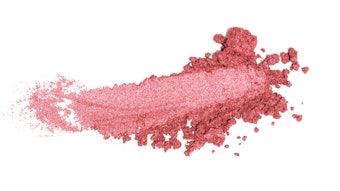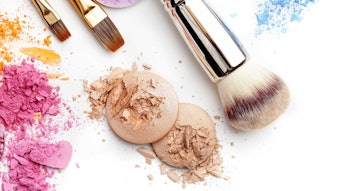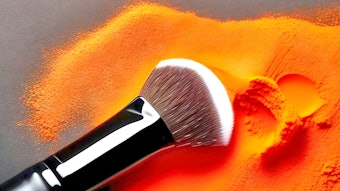Three Indian inventors have filed a US patent application disclosing the use of a pre-existing scarlet red stain of cosmetic use, called alta, for staining sodium dodecyl sulfate polyacrylamide gels and nitrocellulose membranes in Western blot analysis. This analysis, which is the definitive test for bovine spongiform encephalopathy, detects proteins in a tissue extract or homogenate. The stain requires only a 10% solution of alta and is reportedly easy to use and inexpensive.
This use as a protein stain is a new use for alta, traditionally made of twigs, berries, barks or flowers and used by women in north and northeastern parts of India to decorate their feet and palms, usually in various shades of red. But the color red has a long tradition in Indian color cosmetics, particularly as a stain or mark of a woman’s marital status.
Red
Sindoor, mehndi and kumkum are all examples of the use of the color red in Indian cosmetics for the Hindu wedding ceremony, especially in the tradition of the Gujaratis living in the northwestern part of the Indian subcontinent. Hinduism is the most popular religion in India, practiced by more than 80% of India’s 1.1 billion people, which is one-sixth of the world’s population. Even the wedding gown traditionally has been red in northern India.
Why red? The Indian people view red as a good omen, an attitude shared by their neighbors, the Chinese. But perhaps the explanation for the Indians lies deeper in the spirituality of the Hindus at the level of the chakras. A chakra is any of the seven body centers believed by Hindus to be sources of energy for psychic and spiritual power.
The base or root chakra, also called the muladhara, is related to security, survival and also to basic human potentiality. One online source explains that this center is located in the region between the genitals and the anus. The muladhara is said to relate to the inner adrenal glands, the adrenal medulla, responsible for the fight and flight response when survival is under threat. In this region is located a muscle that controls ejaculation in the sexual act. A parallel is drawn between the sperm cell and the ovum, where the genetic code lies coiled. Red is the color associated with the muladhara. It seems reasonable that the association between red and fertility and preservation of the species would be auspicious for a wedding.










